Reports: Difference between revisions
Created page with "<!--{{DISPLAYTITLE:<span style="position: absolute; clip: rect(1px 1px 1px 1px); clip: rect(1px, 1px, 1px, 1px);">{{FULLPAGENAME}}</span>}}--> {{#ask: Category:Report |..." |
No edit summary |
||
| Line 1: | Line 1: | ||
<!--{{DISPLAYTITLE:<span style="position: absolute; clip: rect(1px 1px 1px 1px); clip: rect(1px, 1px, 1px, 1px);">{{FULLPAGENAME}}</span>}}--> | <!--{{DISPLAYTITLE:<span style="position: absolute; clip: rect(1px 1px 1px 1px); clip: rect(1px, 1px, 1px, 1px);">{{FULLPAGENAME}}</span>}}--> | ||
{{#ask: | |||
[[Category:Paper]] | |||
[[Has doc type::report]] | |||
|sort=Has date published | |||
|order=descending | |||
|?= | |||
|?Has pdf#=2 | |||
|?Has summary#=3 | |||
|?Has pdf#=4 | |||
|format=plainlist | |||
|named args=yes | |||
|introtemplate=Show image Header | |||
|template=Show image link | |||
|outrotemplate=Show link Footer | |||
}} | |||
{{#ask: | {{#ask: | ||
[[Category:Report]] | [[Category:Report]] | ||
Revision as of 00:59, March 4, 2024
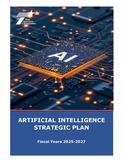
|
Artificial Intelligence Strategic Plan Fiscal Years 2025-2027 | |
| The AI Strategic Plan establishes a vision, principles, and roadmap to integrate advanced analytics and intelligent systems into TxDOT's operations and transportation system. | ||
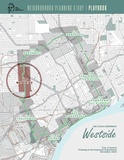
|
Detroit Neighborhoods Playbook | |
| A playbook is a roadmap with immediate next steps that residents, business owners and neighborhood organizations can take to leverage the investments of the Joe Louis Greenway in their neighborhoods. These steps are not isolated but are meant to meet the goals set forth in the Joe Louis Greenway Framework Plan of 2021, and the specific goals for the JLG Westside Planning Area defined in this process. | ||
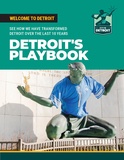
|
Detroits Playbook | |
| Detroit moves from bankruptcy to "investment grade" credit rating in less than 10 years | ||
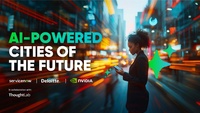
|
AI Powered Cities of the Future | |
| Artificial intelligence (AI) is revolutionizing how cities analyze data, create content,
and perform tasks, allowing them to boost productivity, drive efficiencies, and better meet the needs of residents and citizens. | ||
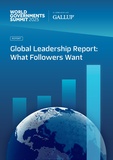
|
Global Leadership Report 2025 | |
| Today’s leaders face profound and complex challenges, such as climate change, conflict and artificial intelligence, and must make decisions that affect the lives of their followers. In this changing world, it is crucial for leaders to understand the reasons people follow them.
Gallup’s latest study, based on surveys conducted in 52 countries, builds on decades of our research into what people need from their leaders. More than anything, the data confirm that followers need a sense of hope from their leaders. Trust is the second most important need, followed by compassion, then stability. These four needs are consistent, irrespective of country, demographics or the type of leader in question. These needs are also linked to wellbeing: The more needs leaders meet, the more suffering is reduced. | ||
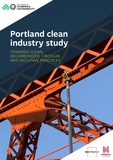
|
Portland clean industry study | |
| In 2021, the concept of a “Clean Industry Hub” was suggested as a way to address industrial and institutional emissions while improving profitability, inclusive prosperity, and environmental co-benefits. Under the leadership of Commissioner Carmen Rubio,
the Bureau of Planning and Sustainability secured funds to explore the hub concept – whether that be a physical space, virtual space, or combination. The project included two components: an Assessment process to consider current conditions, global hub models, and policy and finance tools, and a Roadmap process to identify priority strategies moving forward. The Assessment and Roadmap were guided by an Advisory Group of 28 leaders representing private, public, nonprofit, and academic sectors. This document shares the Assessment and Roadmap findings. | ||

|
Extended Reality Telehealth for Rural Spaces | |
| Rural Americans encounter substantial healthcare disparities when compared to urban counterparts, including provider shortages, less access to specialists, and higher mortality risks from various chronic and acute conditions. While 13.8% of the U.S. population lives in rural areas, rural regions comprise two-thirds of healthcare provider shortage areas. Accordingly, broadband-enabled telehealth that mitigates barriers to healthcare access can be a transformative solution for patients and physicians in rural areas.
Emerging telehealth platforms extend beyond traditional video consultations, incorporating extended reality (XR) technologies comprising virtual reality (VR) and alternative reality (AR) solutions. Additionally, artificial intelligence (AI) promises unique diagnostic and epidemiological benefits for care management. These technologies collectively offer advancements for mental health treatment, physician training, and personalized care management. Rural broadband infrastructure is critical to enabling these technological healthcare innovations, representing a key pathway to improving medical access and patient outcomes for rural users. | ||

|
Micro-Delivery Hub Feasibility Study | |
| This report examines the potential for implementing zero-emissions micro-delivery hubs in Portland to reduce carbon emissions, improve air quality, and enhance safety in urban logistics. Transportation, particularly medium- and heavy-duty vehicles, remains a major contributor to Oregon's greenhouse gas emissions, with significant impacts on low-income and BIPOC communities. Driven by Portland’s Climate Emergency Declaration and the 2040 Freight Plan, this study explores micro-delivery solutions, such as cargo bikes and small electric vehicles, as alternatives to diesel-powered freight trucks. Drawing insights from cities like Boston and New York, the report evaluates Portland’s existing transportation and land-use policies, identifies zoning and regulatory challenges, and proposes pilot projects and code adjustments to support a cleaner, safer, and more sustainable urban delivery network. | ||
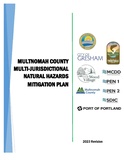
|
Multnomah County Multi-Jurisdictional Natural Hazards Mitigation Plan | |
| The update to the Multnomah County Multi-Jurisdictional Natural Hazards Mitigation Plan (NHMP) was adopted by resolution of the Multnomah County Board on October 13 2024. The final version of the plan is posted below, and incorporates comment from the Oregon Department of Emergency Management (OEM) and Federal Emergency Management Agency (FEMA). The plan received final federal review approval on August 24, 2023, and may be now be adopted by all of the participating jurisdictions and districts. A list of adoption dates by each multi-jurisdictional partner will be added to this page soon. This plan update was built through stakeholder input, public comment, and the most up-to-date studies and research about natural hazard risk in Multnomah County. | ||

|
Internet of Things (IoT) Advisory Board (IoTAB) Report 2024 | |
| The world is undergoing a fourth industrial revolution, driven by the economic, societal, and cultural innovations of the Internet of Things (IoT). This revolution combines connectivity and digital innovation with the physical world to accelerate economic, environmental, and social benefits across the world.
The United States is at a critical juncture: the Internet of Things (IoT) is rapidly evolving and presents a historic opportunity to leverage American innovation and ingenuity to sustain economic leadership and accelerate achievement of societal benefits. IoT adoption is not just an option; it is an imperative for the United States to lead with vision. It’s a call to embrace a future where connectivity transcends borders and global trade, driving our economy to new heights, fostering societal wellbeing, and ensuring that America remains at the forefront of global innovation. | ||

|
Disruptions on the Horizon | |
| Today, the world faces multiple complex crises that can contribute to unexpected disruptions. The Disruptions on the Horizon report stems from a critical question many decision makers grapple with: what disruptions should we anticipate next?
The Disruptions on the Horizon 2024 report identifies and assesses 35 disruptions for which Canada may need to prepare and explores some of the interconnections between them. These disruptions are potential events and circumstances that could affect our society and the way it functions, as well as the way people live, work, and connect. Their impacts can be perceived as positive or negative, depending on one’s perspective. While the disruptions presented in this report are not guaranteed to occur, they are plausible. Neglecting to consider them may lead to policy failure and missed opportunities. Thinking through possible disruptions when developing policies, programs, and strategies could help seize opportunities, navigate impacts, and minimize risks. | ||
| Semiconductor Workforce and Talent Assessment | ||
| The report provides an overview of Oregon’s semiconductor industry and workforce. | ||
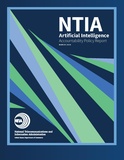
|
Artificial Intelligence Accountability Policy Report | |
| Artificial intelligence (AI) systems are rapidly becoming part of the fabric of everyday American life. From customer service to image generation to manufacturing, AI systems are everywhere.
Alongside their transformative potential for good, AI systems also pose risks of harm. These risks include inaccurate or false outputs; unlawful discriminatory algorithmic decision making; destruction of jobs and the dignity of work; and compromised privacy, safety, and security. Given their influence and ubiquity, these systems must be subject to security and operational mechanisms that mitigate risk and warrant stakeholder trust that they will not cause harm. | ||
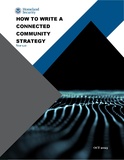
|
DHS Guidebook on How to Write a Connected Community Strategy | |
| The U.S. Department of Homeland Security (DHS) has partnered with representatives from New York (NY), San Jose (CA), Memphis (TN), Chattanooga (TN), and Colorado State University to develop this "how to" guide to help community leaders build a digital transformation strategy. Contributors include chief information officers, chief information security officers, chief privacy officers, economists, technology experts, cyber policy professionals, risk analysts, and former municipal executives, each with unique experience driving community digital transformations. This foundational guide is the first in a series of guides that DHS hopes will help communities achieve their connected community goals. | ||
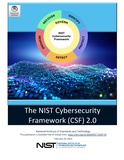
|
NIST Cybersecurity Framework 2.0 | |
| The National Institute of Standards and Technology (NIST) has updated the widely used Cybersecurity Framework (CSF), its landmark guidance document for reducing cybersecurity risk. The new 2.0 edition is designed for all audiences, industry sectors and organization types, from the smallest schools and nonprofits to the largest agencies and corporations — regardless of their degree of cybersecurity sophistication. | ||
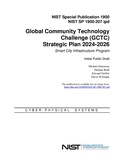
|
Global Community Technology Challenge (GCTC) Strategic Plan 2024-2026 | |
| This publication provides a Strategic Plan for the Smart City Infrastructure (SCI) program of the Communications Technology Laboratory at the National Institute for Standards and Technology (NIST), the research laboratory of the U.S. Department of Commerce. The SCI program manages the Global Community Technology Challenge (GCTC), a nationwide public-private partnership of cities and communities; local and state government agencies; and private-sector for-profit and non-profit entities.
This strategy is based on a consensus planning process chartered by the NIST SCI program in collaboration with the leadership of twelve GCTC technology sectors (i.e., working groups), who collectively represent over 220 regions, cities and communities that have initiated smart city programs or projects as GCTC member communities. | ||
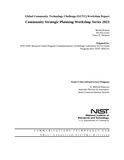
|
Global Community Technology Challenge (GCTC) Workshop Report | |
| The goal of the workshop series was to generate a community-focused perspective aligned with and in support of the federally led NIST Smart City Infrastructure program. The specific objective of the meetings was to solicit GCTC leadership input to articulate vision and mission statements as well as to identify forward looking goals and activities for the volunteer organization to inform a community-based strategy for the GCTC, as well as smart and connected communities across the nation. | ||
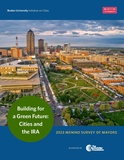
|
Building for a Green Future: Cities and the IRA | |
| Passed in 2022, the Inflation Reduction Act (IRA) features unprecedented federal investment in environmental initiatives. It provides around $370 billion in resources for clean energy technology. These investments come primarily in the form of tax credits and grants available to state and local governments, nonprofits, and individual households.
For example, the Solar for All program “provide[s] up to 60 grants to States, Tribal governments, municipalities, and nonprofits to expand the number of low-income and disadvantaged communities that are primed for residential and community solar investment — enabling millions of families to access affordable, resilient, and clean solar energy.” Despite these massive investments, the Biden Administration has expressed growing concerns and frustration about the slow pace with which federal dollars are translating into concrete projects. | ||

|
Digital Twin Stakeholders | |
| This paper has been written and developed in support of Decarbonizing the Built World: A Call to Action, an owner or occupier-led implementation of digital twin-related capabilities required to support the decarbonization of new and existing buildings.
It specifically addresses the role of the stakeholder in this process. The order of stakeholder engagement is a function of when key decision makers identify goals relating to the improvement of building performance. | ||
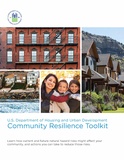
|
HUD-Community-Resilient-Toolkit.pdf | |
| The U.S. Department of Housing and Urban Development (HUD) Resilience Toolkit (Toolkit) is designed to assist communities in enhancing their resilience to climate-related natural hazard risks. Although not the focus of this toolkit, consideration of other hazards, risks, and stresses may also enhance resilience. | ||

|
Artificial Intelligence Risk Management Framework (AI RMF 1.0) | |
| Artificial intelligence (AI) technologies have significant potential to transform society and people’s lives– from commerce and health to transportation and cybersecurity to the environment and our planet. AI technologies can drive inclusive economic growth and support scientific advancements that improve the conditions of our world. AI technologies, however, also pose risks that can negatively impact individuals, groups, organizations, communities, society, the environment, and the planet. Like risks for other types of technology, AI risks can emerge in a variety of ways and can be characterized as long- or short-term, highor low-probability, systemic or localized, and high- or low-impact. | ||
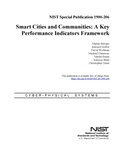
|
Smart Cities: A Key Performance Indicators Framework | |
| This publication presents research findings and scientific work that advance the development and progression of smart city and community measurement methodology. The term 'smart,' as used in the phrase 'smart cities,' is defined here as the efficient use of digital technologies to provide prioritized services and benefits to meet community goals. | ||
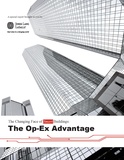
|
The Changing Face of Smart Buildings | |
| This marquee project received considerable attention because it was an integrated energy retrofit of a significant building, according to Dan Probst, who heads JLL’s technical operations. Less visible, says Probst, were the many smart building components installed in the iconic structure. | ||
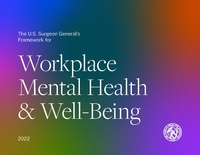
|
Workplace Mental Health & Well-Being | |
| This Framework is dedicated to all workers who lost their lives during the pandemic and to their families. May this serve as a call to action to lift up the voices of workers, particularly those most vulnerable, and to protect their health and well-being. | ||
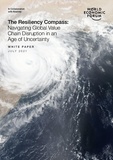
|
The Resiliency Compass | |
| Next generation operations and supply chain leaders will be defined by their ability to withstand and quickly adapt to increasingly disruptive headwinds. | ||

|
Beaverton Annual Report and Five Year Action Plan | |
| Urban renewal in Beaverton is guided by seven goals, included in the voter-approved Central Beaverton Urban Renewal Plan. These goals inform project funding and are the basis for developing programs, creating strategies, and laying the groundwork for reporting how urban renewal resources perform over time. | ||
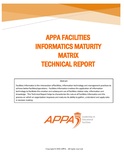
|
APPA Facilities Informatics Maturity Matrix Technical Report | |
| Facilities Informatics is the intersection offacilities, information technology and management practices to achieve betterfacilities/operations. Facilities Informatics involves the application of information technology to facilitate the creation and subsequent use of facilities related data, information and knowledge. This Technical Report helps to characterize the nature of Facilities Informatics and the process on which an organization improves and matures its ability to gather, understand and apply data in decision making. | ||
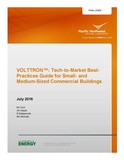
|
VOLTTRON | |
| VOLTTRON™ is an open-source distributed control and sensing platform developed by Pacific Northwest National Laboratory for the U.S. Department of Energy. It was developed to be used by the Office of Energy Efficiency and Renewable Energy to support transactive controls research and deployment activities. | ||

|
Framework for Cyber-Physical Systems | |
| Cyber-physical systems (CPS) are smart systems that include engineered interacting networks of physical and computational components. CPS and related systems (including the Internet of Things (IoT) and the Industrial Internet) are widely recognized as having great potential to enable innovative applications and impact multiple economic sectors in the worldwide economy. | ||
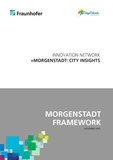
|
Morgenstadt Framework | |
| The "Morgenstadt Framework" is an early version of what is to become the Fraunhofer Morgenstadt approach to analyse cities upon their sustainability performance. The full version will be published as my PhD in 2016. | ||

|
The U.S. National Blueprint for Transportation Decarbonization | |
| This Blueprint offers a whole-of-government approach to transform the transportation sector and sets forth an interagency call to action to coordinate and work effectively together | ||

|
Morgenstadt benchmarking and city development concepts | |
| This report focuses on existing governance aspects in relation to food, water and energy security in the three selected nexus partner cities, Ulaanbaatar, Da Nang and Korat. It produces a city profile for each city, which serves to develop strategic and systemic measures to support innovative and future-oriented city development and/or infrastructure projects as well as to supply the cities with an instrument to be used further on for self-evaluation. This first chapter introduces the report’s background, including information on the project objectives and methodology. | ||

|
Open Knowledge Network Roadmap | |
| Open access to shared information is essential for the development and evolution of artificial intelligence (AI) and AI-powered solutions needed to address the complex challenges facing the nation and the world. The Open Knowledge Network (OKN), an interconnected network of knowledge graphs, would provide an essential public-data infrastructure for enabling an AI-driven future. It would facilitate the integration of diverse data needed to develop solutions to drive continued strong economic growth, expand opportunities, and address complex problems from climate change to social equity. The OKN
Roadmap describes the key characteristics of the OKN and essential considerations in taking the effort forward in an effective and sustainable manner. | ||

|
Cascadia 2050 Vision - Moving to Climate Action | |
| The Cascadia mega-region, running from Portland through Seattle to Vancouver, British Columbia, has become
synonymous with building a better future. Home to so many natural assets and incredible innovation and talent – one of our greatest strengths is partnership. Now is the time to partner to address one of the greatest challenges of our time: the threat of climate change to the region and the world. | ||

|
Federal Policy Building Blocks | |
| The report estimates the socioeconomic impact of federal climate policies under three mitigation scenarios. These mitigation scenarios focus on tax incentives, climate-friendly infrastructure investments, and sector-based performance standards—many of which have been enacted in the 2021 Bipartisan Infrastructure Law and the 2022 Inflation Reduction Act. | ||

|
Open Source and InnerSource Skills in Ireland | |
| Open source has been reported to accelerate innovation, improve
code quality, and increase efficiencies within organisations. It is recognised as being central to all future technological advancements. InnerSource, which seeks to leverage open source principles and create communities behind a corporate firewall, is linked to removing silos and bottlenecks, improving collaboration and developer productivity. | ||

|
Black & Veatch’s Annual Sustainability Report 2022 | |
| Recognizing the positive impact companies can make on social and climate matters, Black & Veatch released its Sustainability Report. The annual report provides a reflection on the global engineering, procurement, construction and consulting leader’s progress toward its 2020-2023 sustainability strategy, as well as a look ahead as sustainability measurement and goal setting evolves globally. | ||

|
The OSPO - A New Tool for Digital Government | |
| As government bodies at all levels look to better engage citizens, make more efficient use of taxpayer funds, and solve global challenges in a local context, the value of a strategic approach to Open Source software has come into sharper focus. | ||

|
2022 Water Report | |
| Aging infrastructure remains the top challenge among more than 300 U.S. water industry stakeholders surveyed for Black & Veatch’s 2022 Water Report. The aging of the sector’s workforce also has intensified, with efforts to respond to increasing retirements of skilled staffers complicated by tight budgets and a tighter job market. | ||

|
MIMs Plus version 5 Final | |
| This document contains the technical specifications of the Living-in.EU (LI.EU) upscaling declaration1 initiative and is based on existing minimal interoperability mechanisms (MIMs)plus some additional fundamental building blocks – hence the name: MIMs Plus. It is one of three deliverables from the LI.EU Technical sub-group, the others being a concept paper, describing the scope and time plan for the work, and operational guidance, with practical guidance on how the technical specifications can be used in practice. | ||

|
Climate Change 2022 | |
| The Working Group III report provides an updated global assessment of climate change mitigation progress and pledges, and examines the sources of global emissions. It explains developments in emission reduction and mitigation efforts, assessing the impact of national climate pledges in relation to long-term emissions goals. | ||

|
School Infrastructure Toolkit | |
| Vice President Harris and Secretary Granholm announced DOE's new $500M program for school energy improvements. program-lead: Sarah Zaleski, Building Technology Office DOE | ||

|
Global Synthesis Report on Local Climate Action 2022 | |
| More than six years after the Paris Agreement, and less than two years before the Global Stocktake planned in the Article 14, the world is still not on track to limit global warming to 2°C compared to pre-industrial area, and even less to 1.5°C (Climate Action Tracker, 2021). It is now certain that even the Covid-19 pandemic did not stop the rise in greenhouse gas (GHG) emissions: it just paused it. | ||

|
UNDP Special Report of Human Security 2022 | |
| New data and analysis in the report, New Threats to Human Security in the Anthropocene, shows that people’s sense of safety and security is at a low in almost every country, including the richest countries, despite years of upwards development success. Those benefiting from some of the highest levels of good health, wealth, and education outcomes are reporting even greater anxiety than 10 years ago. | ||

|
Climate risk and the opportunity for real estate | |
| Climate change, previously a relatively peripheral concern for many real-estate players, has moved to the top of the agenda. Recently, investors made net-zero commitments, regulators developed reporting standards, governments passed laws targeting emissions, employees demanded action, and tenants demanded more sustainable buildings. | ||

|
Smart Cities in the Age of Pandemic | |
| This document outlines a simple, scalable approach that cities can use to integrate smart technology into the fabric of a city to enhance efficiency and livability in normal times and increase resiliency, capability and capacity in the age of pandemic. | ||

|
Decarbonization During Predevelopment of Modular Building Solutions | |
| Affordable, zero carbon emissions is an important climate-performance target for the future of
multifamily housing, and the multifamily construction industry holds an essential position in achieving this goal in the United States. Building construction and operation accounts for 37% of global energy-related carbon emissions (UN Environment Programme 2021). Meanwhile, an additional 3.8 million housing units are needed to address the shortage in the United States. | ||

|
Thinking fast and slow in disaster decision making with Smart City Digital Twins | |
| Many cities are vulnerable to disaster-related mortality and economic loss. Smart City Digital Twins can be used to facilitate disaster decision-making and influence policy, but first they must accurately capture, predict, and adapt to the city’s dynamics, including the varying pace at which changes unfold. | ||

|
Efficient Electric Water Heating Report | |
| This report analyzes the economics and potential benefits of replacing fossil fuel water heaters with heat pump water heaters in multifamily buildings. | ||

|
The New Map of Life Report | |
| The New Map of Life calls on us to shift from a deficit mindset that laments the losses now associated with aging—whether to health, mobility, financial security, independence, or social engagement—and to identify the gains that now go unmeasured and overlooked. | ||

|
Offshore Wind Market Report: 2021 Edition | |
| The Offshore Wind Market Report: 2021 Edition is intended to provide offshore wind policymakers, regulators, developers, researchers, engineers, financiers, supply chain participants, and other stakeholders with up-to-date quantitative information about the offshore wind market, technology, and cost trends in the United States and worldwide. | ||

|
Norwegian National Transport Plan 2022–2033 | |
| The National Transport Plan, which is submitted to the Storting (the Parliament) as a white paper, is produced every four years and sets forth the Government’s transport goals, strategies and priorities in a long-term perspective. | ||

|
Smart Buildings: A Foundation for Safe, Healthy & Resilient Cities | |
| The SBSC Blueprint aims to inform smart city stakeholders (municipalities, developers, integrators, property owners, and managers) about the design of smart buildings within the broader framework of the smart city. | ||

|
Smart Agriculture and Rural SuperCluster Workshop Report 2020 | |
| The Smart Agriculture and Rural SuperCluster is part of this GCTC effort. On February 19, 2020, this SuperCluster conducted a workshop in Phoenix, Arizona to further refine its blueprint for smart agriculture and rural areas. The workshop ultimately sought to develop a consensus-based smart cities and communities framework and best practices, which could subsequently inform widespread smart agriculture and rural initiatives. | ||

|
Municipal IoT Blueprint | |
| If you are a local government official or employed by a municipality, chances are by now you have heard the term “Smart City.” Perhaps you have even wondered what it means for your agency and, possibly, your constituents. However, while it is not difficult to find articles explicating the promise of smart cities it is, in fact, much harder to find examples of actual smart cities. | ||

|
Smart and Secure Cities and Communities Challenge (SC3) | |
| In 2018, NIST and the Department of Homeland Security Science and Technology Directorate (DHS S&T) partnered to initiate the Smart and Secure Cities and Communities Challenge (SC3) as an effort to build on the GCTC program and demonstrate the “value and return on investment for designed-in trustworthiness for smart city deployments. | ||

|
Guide to Developing Resilience Hubs | |
| Climate change is happening now. According to the National Oceanic and Atmospheric Administration (NOAA), the number of billion-dollar disasters has risen significantly over the last ten years. As the ten warmest years ever recorded have happened since 1998, so have the costliest weatherrelated disaster events. As the globe continues to warm, extreme weather events will continue to threaten and impact communities, infrastructure, and systems worldwide. | ||

|
Shifting Power to Communities and Increasing Community Capacity | |
| In all U.S. cities, massive disparities exist between people and neighborhoods. Communities of color and lower income communities sufer disproportionate impacts of climate change and yet are often the last communities supported in the event of an emergency. These communities also generally have less access to resources to respond and recover. Achieving community resilience requires equitably supporting all members of the community, and prioritizing those who experience greater risk to their homes, their jobs, their communities, and their health. | ||

|
Best Practices Framework For Sustainable Energy, Water and Waste Solutions | |
| The Utility SuperCluster theme on sustainability originated from an earlier technology demonstration at GCTC in 2015 called Smart Cities Optimized Action Cluster. The action cluster worked with the Las Vegas Valley Water District on Water Infrastructure Management and Leak Detection and was deployed successfully in three metropolitan cities in the United States. | ||

|
Blueprint for Smart Public Safety in Connected Communities | |
| This Blueprint for Smart Public Safety for Connected Communities is a guide for cities to identify, assess, develop, and apply cutting edge technologies to the challenges of public safety in advanced, complex, and technologically integrated communities, or “Smart & Connected Communities” (S&CC). First issued in August 2017, this document updates the previous version, and was issued following the GCTC Exposition on 10-12 July 2019. | ||

|
Public WI-FI Supercluster Blueprint | |
| The purpose of this blueprint is to provide readers with a practical “how-to” guide for deploying a Public Wi-Fi system within their jurisdiction or agency. | ||

|
Designing A Smart City Data Platform to Unlock the Power of Civic Internet of Things | |
| This white paper reflects the collective wisdom of the one hundred eighteen people who gathered in Kansas City, Missouri in early February 2017 to figure out how to transform cities into data-driven organizations focused on providing 21st Century Services to 21st Century Citizens. Our goal was – and remains – to identify the 85-120 things that all cities measure in a standardized, replicable form so that we can better partner with industry and academic institutions and solve issues. We didn’t get there in two days. What we did accomplish was an identification of several considerations that cities need to account for when building the data driven culture. We also figured out that many of the challenges that we face in Kansas City are shared in large municipalities like Chicago and New York City and smaller cities like Akron, OH and Branson, MO. | ||

|
Blueprint for Improving First and Last Mile Connections For Transit and Freight | |
| This blueprint will address the range of opportunities offered by new mobility-related technologies. We will provide data about the readiness of these technologies and how we believe they will influence city and community planning offering potential short and long term improvements in safety, equity, climate, employment and congestion. | ||

|
Development & Implementation of Distributed Sensor Networks | |
| In nearly every modern civic infrastructure initiative, there are compelling reasons to leverage data and analytics to deliver the most value and impact to citizens. However, few resources are available that help communities understand the critical nature of the underlying sensors and infrastructure that support these applications, especially in a cross-sector, vendor agnostic way. This document strives to provide a robust orientation for those tasked with assessing, planning or deploying these advanced sensor networks. This document is not a prescriptive, step-by-step guide to a successful deployment, as the topical scope is far too large, and community and project variability far too broad to provide a monolithic solution. Instead, we seek to challenge the reader to discover the critical aspects of their project through coordinated effort with the appropriate stakeholders, and with full appreciation for the cultural, technical and resource constraints of their community. | ||

|
National Disaster Recovery Framework | |
| The National Disaster Recovery Framework (NDRF) establishes a common platform and forum for
how the whole community builds, sustains, and coordinates delivery of recovery capabilities. Resilient and sustainable recovery encompasses more than the restoration of a community’s physical structures to pre-disaster conditions | ||

|
Methodological guide on smart cities | |
| The study defines the smart city model for all Spanish municipalities and analyzes its current situation. | ||

|
GHG Protocol Corporate Accounting and Reporting Standard | |
| The GHG Protocol Corporate Accounting and Reporting Standard helps companies and other organizations to identify, calculate, and report GHG emissions. It is designed to set the standard for accurate, complete, consistent, relevant and transparent accounting and reporting of GHG emissions by companies and organizations, including information on setting organizational and operational boundaries, tracking emissions over time, and reporting emissions. It also provides guidance on GHG accounting and reporting principles, business goals and inventory design, managing inventory quality, accounting for GHG reductions, verification of GHG emissions, and setting a GHG target. | ||